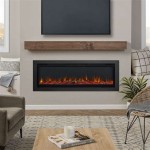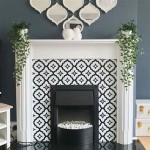Glass Doors on a Fireplace: Open or Closed? A Comprehensive Guide
The question of whether to operate a fireplace with the glass doors open or closed is a common one, with the answer depending on a variety of factors including fireplace design, burning efficiency, and safety considerations. Understanding the nuances of fireplace operation can contribute to a more enjoyable and efficient heating experience, while also optimizing safety within the home.
Fireplace glass doors, also known as fireplace screens or enclosures, are designed primarily to serve as safety features. They help prevent embers and sparks from escaping the firebox, which could potentially ignite nearby flammable materials like rugs, furniture, or curtains. Furthermore, they can prevent small children and pets from coming into direct contact with the flames, reducing the risk of burns. Beyond safety, glass doors also offer some aesthetic appeal, providing a cleaner and more modern look to the traditional fireplace.
The debate over leaving glass doors open or closed centers around the optimal way to balance safety, efficiency, and the visual experience of the fire. It's critical to consult the fireplace manufacturer's instructions, as recommendations can vary depending on the specific model. Operating a fireplace incorrectly can lead to reduced heating efficiency, increased creosote buildup, or even safety hazards.
Key Point 1: Efficiency of Burning
The efficiency of burning wood in a fireplace is affected by airflow, and the status of the glass doors significantly influences this aspect. When the glass doors are open, more air typically enters the firebox. This increased airflow can lead to a faster, hotter burn, but it also means that the fire consumes wood at a quicker rate. The open doors allow for more radiant heat to enter the room directly from the flames, creating a more readily felt warmth immediately in front of the fireplace.
However, the open airflow can also mean that a significant amount of heated air is drawn up the chimney, rather than circulating within the room. This can lead to a net loss of heat from the house, particularly if the chimney damper is not properly sealed or if the fireplace design is not optimized for efficient heating. In essence, an open fireplace can act as a vent, drawing warm air out of the room and replacing it with colder air from outside.
Closing the glass doors, on the other hand, changes the dynamics of airflow. The reduced airflow slows down the burning rate of the wood, potentially leading to a longer-lasting fire. Additionally, closing the doors can help contain the heat within the firebox, which can then be radiated more evenly into the room. Some models of fireplaces are designed with vents or openings that allow for controlled airflow even when the doors are closed, improving overall efficiency.
It's important to be aware that closing the doors on a fire that is already burning intensely with a large flame can potentially lead to the buildup of unburned gases within the firebox. These gases can ignite rapidly, creating a small explosion or backdraft. It's generally recommended to slowly reduce the fire intensity before closing the doors, and to maintain a small opening if any concerns about gas buildup exist.
Key Point 2: Safety Considerations
Safety is paramount when operating a fireplace. The primary safety benefit of glass doors is the containment of embers and sparks. Open fireplaces pose a significant risk of spreading fire if sparks land on combustible materials. Glass doors effectively eliminate this risk, providing a barrier between the fire and the surrounding environment.
Another safety consideration is related to carbon monoxide. Incomplete combustion of wood can produce carbon monoxide, a colorless and odorless gas that is highly toxic. A properly functioning chimney and adequate ventilation are crucial to ensure that carbon monoxide is safely expelled from the house. While glass doors do not directly affect carbon monoxide production, they can influence the airflow within the firebox, which in turn can affect the efficiency of combustion. If the airflow is restricted too much, it could potentially lead to incomplete combustion and higher levels of carbon monoxide production. It is essential to have a carbon monoxide detector installed in the home, regardless of whether the fireplace doors are open or closed.
Furthermore, the surface of the glass doors can become extremely hot when the fire is burning. This poses a burn risk, especially to young children and pets. It is important to supervise them closely when the fireplace is in use and to consider using a fireplace screen in addition to the glass doors for added protection. Some glass doors are designed with a mesh screen that fits over the glass, reducing the surface temperature and minimizing the risk of burns.
Key Point 3: Fireplace Design and Manufacturer's Recommendations
The optimal way to operate a fireplace, with the doors open or closed, is often dictated by the fireplace's design and the manufacturer's instructions. Some fireplaces are specifically designed and tested to be operated with the doors closed, while others are intended to be used with the doors open. Operating a fireplace contrary to the manufacturer's recommendations can compromise its efficiency, safety, and longevity.
Factory-built fireplaces, often referred to as prefabricated fireplaces, are typically designed and tested with specific operating parameters. These fireplaces often have intricate venting systems and are designed to operate with the doors closed to maximize efficiency and minimize creosote buildup. Operating these fireplaces with the doors open can disrupt the designed airflow patterns and lead to excessive creosote accumulation, which can increase the risk of chimney fires.
On the other hand, traditional masonry fireplaces may be more versatile in terms of operation. However, even with these fireplaces, it's important to consider the impact of airflow on burning efficiency and safety. If a masonry fireplace has glass doors installed as an aftermarket addition, it's crucial to ensure that the door installation does not impede the chimney's draft or create any other safety hazards.
Ultimately, reading and following the manufacturer's instructions is essential for determining the appropriate way to operate a specific fireplace model. If the instructions are unclear or unavailable, it's advisable to consult with a qualified fireplace professional for guidance. This professional can assess the fireplace's design and provide recommendations that balance safety, efficiency, and aesthetic preferences.

Should Your Fireplace Doors Be Open Or Closed While Burning

Should Your Fireplace Doors Be Open Or Closed While Burning

Fireplace Doors Should I Keep Them Opened Or Closed Why Its Necessary

Fireplace Glass Doors Open Or Closed The Definitive Answer

Fireplace Glass Doors Open Or Closed The Definitive Answer

Fireplace Doors Mechanical Problems Chimneys Com

Fireplace Glass Doors Open Or Closed The Definitive Answer

Glass Fireplace Doors

Fireplace Glass Doors Vs Screens Full Service Chimney

5 Big Reasons You Need Fireplace Doors Helpful Advice
Related Posts








